Fruits starting with D span a range of tropical to temperate varieties known for their distinct flavors, colors, and uses. These D-letter food varieties fall into five categories: tropical fruits, berries, citrus fruits, stone fruits (pits), and pomaceous fruits (core).
Their tastes range from intensely sweet and aromatic to sour and tangy. The colors of these fruits are equally varied, including the deep purple of damsons, the bright red of desert quandong, and the yellow to orange hues of date-plums.
These fruits are utilized in various ways, from being eaten fresh and used in cooking and baking to preparing preserves, sauces, and health products.
Not only will I share with you the most loved fruits starting with D, but I’ll also tell you about some vegetables that have names beginning with D. Let’s get going!
21 Fruits that Start with D with Filters
Below are 21 fruits that start with D, listed by how popular they are. You can also use a filter to find out which ones are national, which ones are exotic, and which ones are good for cooking, making drinks, or as decorations for food.
Date Palm
- Algeria
- Saudi Arabia
- United Arab Emirates
- For Beverages
- For Dishes
- National
Date palm, often called dates, is a fruit from the date palm tree. Originally from the Middle East and North Africa, they’re now grown in warm regions across the globe, like California and Australia.
Dates are known for their sweet flavor, chewy texture, and dark brown appearance. They come in various types, including Medjool and Deglet Noor, which are among the most popular.
Dates are typically harvested in the late fall and can be eaten fresh or dried. You can enjoy them as a snack, stuffed with nuts or cheese, or used in desserts and savory dishes.
Dates are special in many Middle Eastern countries, often breaking the fast during Ramadan or featuring in celebratory meals.
Dragon Fruit
- Vietnam
- Exotic
- For Beverages
- For Dishes
- For Garnish
- National
Dragon fruit, also known as pitaya or pitahaya, is a tropical fruit known for its vibrant pink or yellow skin and speckled flesh, which can be white or deep red. Native to the Americas, it’s now cultivated in Southeast Asia, the United States, and the Caribbean, among other regions.
The fruit tastes mildly sweet, like a blend of kiwi and pear, with a slight crunch from its tiny black seeds.
Dragon fruit is most commonly eaten fresh; you cut it in half and scoop out the flesh. It’s also a great addition to salads, smoothies, and desserts. This fruit flourishes in tropical and subtropical climates like Vietnam, Thailand, and the Philippines.
Durian
- Indonesia
- Malaysia
- Singapore
- Exotic
- For Dishes
- National
Durian, often called the “king of fruits,” is a tropical fruit known for its large size, unique odor, and thorn-covered husk. It’s native to Southeast Asia, where it’s both celebrated and controversial due to its powerful aroma, which some find unpleasant.
Inside, its flesh is soft, creamy, and tastes like a rich blend of sweet, almond-like flavors. Notably, there are several types of durian, with the Musang King and D24 being particularly famous for their superior taste.
Eating durian is an experience; you split open the spiky exterior to reveal the custard-like fruit inside, which can be eaten fresh or used in sweets and savory dishes.
This fruit has a distinct season, peaking in the middle of the year, and it’s widely consumed in Malaysia, Thailand, and Singapore.
Dewberry
- For Beverages
- For Dishes
- For Garnish
Dewberries are found in North Europe. It is a small fruit, smaller than blackberry, which grows with trailing stems along the ground. Dewberries have beautiful purplish-red skin, similar to raspberries.
You can eat fresh dewberry or make it into preserves or pies. Dewberries taste like blackberries but tend to be more tart despite their sweetness. Dewberries are perfect for making jams and jelly, or you can also use them to make fruit wine.
Dekopon
- Exotic
- For Beverages
- For Dishes
Dekopon is a seedless and sweet variety of mandarin orange, also celebrated as one of the best-tasting citrus fruits.
Originating from Japan, it’s a hybrid between Kiyomi and Ponkan varieties, notable for its distinctive bump at the top and its larger size compared to typical mandarins.
The fruit is sweet and slightly tangy, covered by a thick, easy-to-peel skin. It’s mostly available in the winter and spring months.
To enjoy a Dekopon, peel off the skin and enjoy the juicy segments. It’s often eaten fresh but can also be used in salads, desserts, and drinks. Dekopon has gained popularity in Japan, Brazil, South Korea, and the United States.
Damson
- For Dishes
Damson, or damson plum, belongs to the plum family and is known for its small, oval shape with smooth, purple skin. Native to the region around the Black Sea, the damson is a hardy fruit tree less susceptible to disease than other plum varieties.
It has a raw tart flavor, which transforms into a rich, spicy sweetness when cooked, making it a favorite for jams, jellies, and even in the brewing of some traditional liqueurs.
Desert Lime
- Exotic
- For Beverages
- For Dishes
Desert lime is a citrus species originating from Queensland, New South Wales, and South Australia. It is also known as bush lime, native cumquat, or wild lime. Its fruit is small but has a unique flavor.
Desert lime tastes sour so it can be used instead of lemon. You can use this fruit to make sauces, cordials, pickles, marmalades, and chutneys.
Duku Fruit
- Exotic
- For Beverages
- For Dishes
Duku fruit, or langsat or lanzones, is a tropical fruit native to Southeast Asia. Duku is the name for this fruit’s sweeter and rounder variety: thick, pale-yellow skin and translucent, juicy segments inside.
The taste of duku fruit is a blend of sweet and sour, reminiscent of a bittersweet grapefruit with a hint of peach or pineapple.
Eating duku is straightforward: peel the skin and enjoy the segments inside, but be mindful of the bitter seeds. Duku is famous in its native regions, such as Indonesia, Malaysia, and the Philippines, where it’s eaten fresh and used in desserts and salads.
Davidson’s Plum
- Exotic
- For Dishes
Davidson’s plum is an Australian fruit native to the rainforests of Queensland and New South Wales. Unlike common plums, Davidson’s plum sports a deep purple, almost black skin with red flesh inside.
It’s known for its tart, sour taste, making it more popular in cooking and preserves than eaten raw.
Most people incorporate Davidson’s Plum into jams, sauces, or desserts to balance its tartness with sweet flavors.
Darling Plum
- Exotic
- For Beverages
- For Dishes
Darling plum, or kakadu plum, is a fruit native to Australia, particularly the Northern Territory, Western Australia, and Queensland. The fruit is small and green, with a taste ranging from tart to slightly sweet. Its season is during the Australian late wet season to early dry season.
Eaten fresh, the kakadu plum is quite tart, but it’s often used in preserves, sauces, and health products.
Dabai Fruit
- Exotic
- For Dishes
Dabai fruit, also known as the Sibu olive, is a tropical fruit native to Sarawak, Malaysia. It is not widely known outside of Borneo and is considered exotic.
Dabai resembles a small, black olive but has a unique flavor profile, combining fatty, creamy textures with a slightly sour aftertaste, unlike any other fruit. It’s typically eaten after a brief soak in warm water to soften it, often seasoned with soy sauce and sugar.
To enjoy dabai, locals commonly mix it with rice or use it as a side dish, appreciating its rich, nutty flavor.
Desert Quandong
- Exotic
- For Dishes
Desert Quandong, or Quandong for short, is a native Australian fruit, thriving in arid and semi-arid zones of Australia. Also known as native peach, the Desert Quandong is a bright red, spherical fruit with a tart flavor.
It has a hard, edible kernel, which Indigenous Australians use for medicinal and nutritional purposes. The fruit’s season is late winter to early spring.
Traditionally, Indigenous Australians eat Desert Quandong fresh or dried, and it’s used in various dishes, from jams and pies to savory sauces.
Dracontomelon
- Exotic
- For Dishes
Dracontomelon, also known as dragon eye fruit or New Guinea walnut, is a tropical fruit native to Southeast Asia and the Pacific Islands. The fruit has a tough, woody exterior and a fleshy interior that ranges from sour to sweet.
Its appearance is reminiscent of a small, green mango. Dracontomelon fruits are typically harvested during the late summer and early autumn.
To consume dracontomelon, the hard outer shell is cracked open to reveal the edible flesh inside. It can be eaten fresh or used in cooking, particularly in local Southeast Asian cuisines, where it’s often incorporated into soups and stews for its tangy flavor.
This fruit is popular in its native regions, especially Vietnam and the Philippines.
Dangleberry
- For Beverages
- For Dishes
Dangleberry, known scientifically as Gaylussacia frondosa, is a wild berry native to the eastern United States. It’s closely related to blueberries and huckleberries, bearing small, dark berries that are sweet and tart.
The berries are typically ready to harvest in late summer and are often found in woodland areas, growing on low, bushy plants with glossy, green leaves.
Dangleberries can be enjoyed fresh off the bush or used in traditional berry recipes, such as pies, jams, and jellies.
Darwin’s Barberry
- For Beverages
- For Dishes
Darwin’s barberry is an evergreen shrub that produces small, edible berries. Native to southern Chile and Argentina, it was named after Charles Darwin, who discovered the plant during his voyage on the HMS Beagle.
The fruit is orange to deep red, with a tart flavor that becomes sweeter as it ripens. It’s often used in jams, jellies, and pies, much like other berries.
Eating Darwin’s barberry fresh is an option when fully ripe, but many prefer to sweeten it for culinary use.
Desert Banana
- For Beverages
- For Dishes
Desert banana, or the banana yucca or Yucca baccata, is a fruit-bearing plant native to the Southwestern United States and northern Mexico. Despite its name, it’s not a banana but gets the moniker from its fruit’s banana-like shape and size.
The fruit is fleshy, sweet when ripe, and can be eaten raw or cooked. It has a slightly bitter aftertaste, if not fully ripe. The flowers of the yucca plant are also edible and have a mild, sweet taste.
The fruit is traditionally used by Native American tribes in the region, both as food and in ceremonial contexts. It can be baked or dried for storage and is often incorporated into sweet dishes.
Dangyuja
- Exotic
- For Beverages
Dangyuja is a citrus fruit native to Jeju Island in South Korea. It has larger and rougher skin than other citrus fruits, with a bright yellow color when fully ripe.
Dangyuja is known for its intense aroma and very sour taste, which makes it less likely to be eaten raw, but highly valued for its zest and juice in Korean cuisine.
The fruit is used to make teas, marmalades, and various traditional Korean dishes and remedies.
Date-Plum
- Exotic
- For Beverages
- For Dishes
Date-plum is a fruit that traces back to Southwest Asia and Southeast Europe. It’s a small fruit with a taste reminiscent of dates when ripe, featuring a sweet, rich flavor. The appearance of the date-plum is similar to a large berry, with a smooth, yellow to orange skin when ripe.
This fruit is part of the larger Diospyros family, which includes several varieties of persimmons. Date-plum is enjoyed fresh or dried and is popular in various cuisines for its versatility in both sweet and savory dishes.
They are from Eastern Europe across East Asia, adapting well to different climates.
Desert King Fig
- For Beverages
- For Dishes
Desert King fig is a variety of figs known for its ability to thrive in hot, dry climates, making it an excellent choice for regions with less water. This fruit stands out with its large size and striking green exterior, which encases a sweet, strawberry-red flesh.
The taste is sweet, making it a favorite for eating fresh off the tree. The Desert King fig typically ripens in the late summer.
To enjoy this fruit, you can eat it fresh, slice it into salads, or use it in baking and preserves. Its robust flavor also pairs well with cheeses and nuts for a gourmet experience.
Popular in the southwestern United States, particularly in areas like California, the Desert King fig is appreciated for its adaptability and the minimal care required to produce fruit.
Discovery Apple
- For Beverages
- For Dishes
- For Garnish
The Discovery apple is an early-season fruit favored for its bright red skin and crisp, juicy flesh. It offers a perfect balance of sweet and tart flavors. Discovery Apples are typically one of the first apples to ripen, marking the start of apple season in late summer.
Originating from the UK, this apple has gained popularity for its exceptional flavor and texture, which makes it ideal for fresh eating.
Eating a Discovery Apple is a delight; its crispness and juiciness make it perfect for a snack or incorporated into salads and desserts. While mainly popular in the UK, its reputation for quality has seen it gain fans in other parts of the world.
Dead Man’s Fingers Fruit
- Exotic
- For Dishes
Dead Man’s fingers fruit, scientifically known as Decaisnea fargesii, is an unusual and exotic fruit native to East Asia, particularly found in China and the Himalayas.
The name comes from its striking appearance; the fruit is long, tubular, and bluish-black, resembling the fingers of a corpse.
Despite its macabre name, the fruit inside is surprisingly pleasant, with a jelly-like texture and a taste that’s mildly sweet, often compared to a subtle melon or cucumber flavor.
This fruit is typically eaten fresh. You can open the pod along its seam to reveal the translucent, soft flesh that can be scooped out and enjoyed directly.
What Are the Most Famous Vegetables that Start with D?
Here are the top 5 vegetables that start with the letter D:
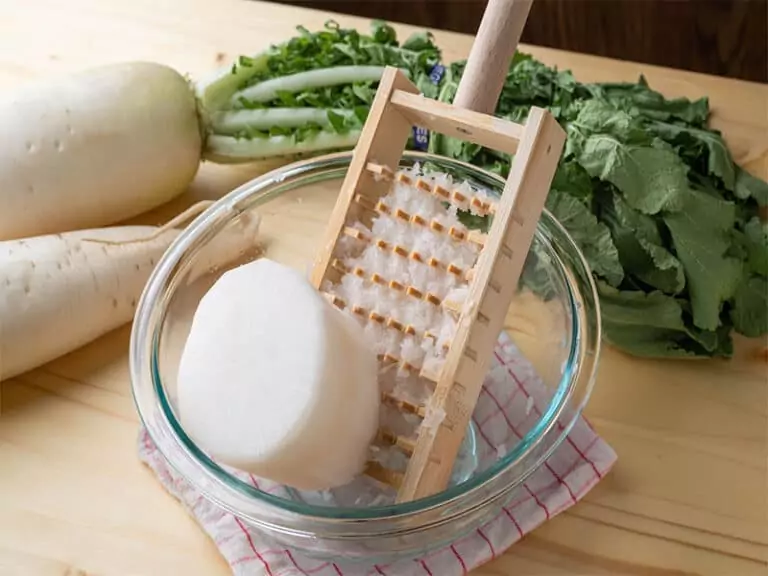
Daikon
Daikon is a large white radish with a mild flavor, commonly used in Asian cuisine for salads, stir-fries, and pickles.
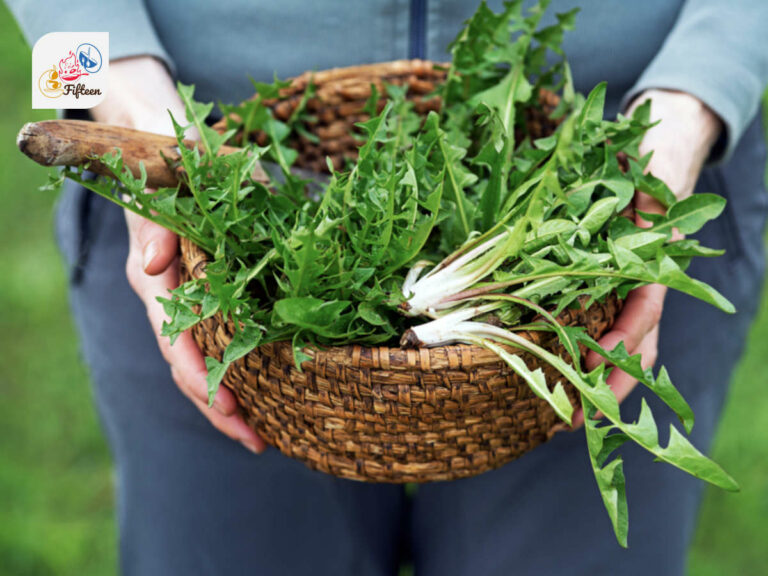
Dandelion Greens
Dandelion greens are the edible leaves of the dandelion plant, offering a bitter, peppery flavor. They are often used in salads and as a cooked green.
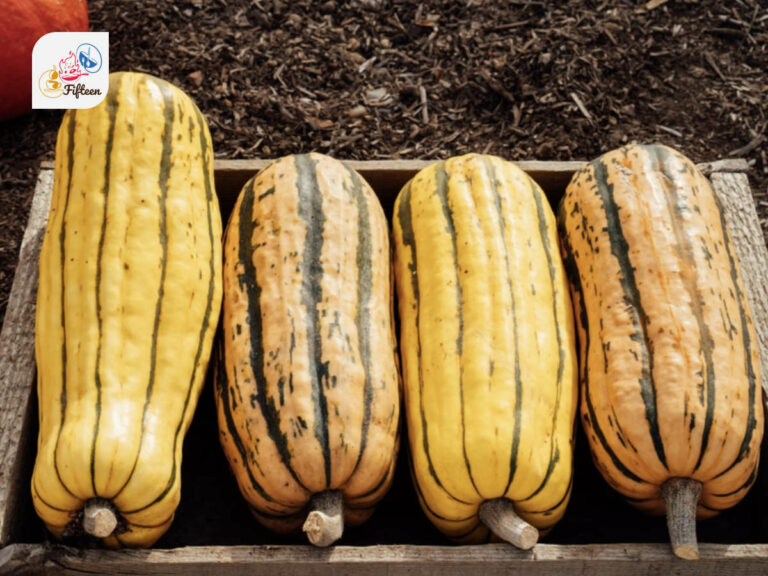
Delicata Squash
Delicata squash is a small, oblong squash with cream-colored, green-striped outer skin and sweet, orange flesh inside.
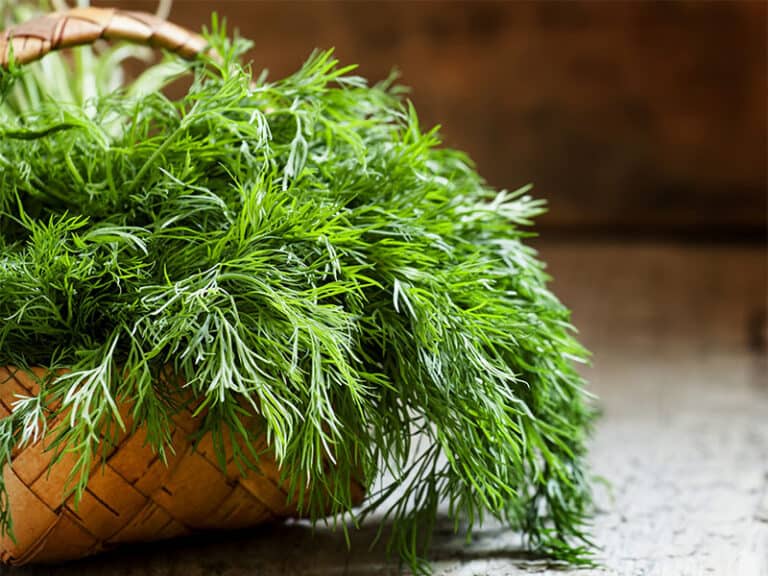
Dill
Dill is an herb with feathery green leaves, known for its distinct, aromatic flavor, commonly used to season soups, salads, and fish.
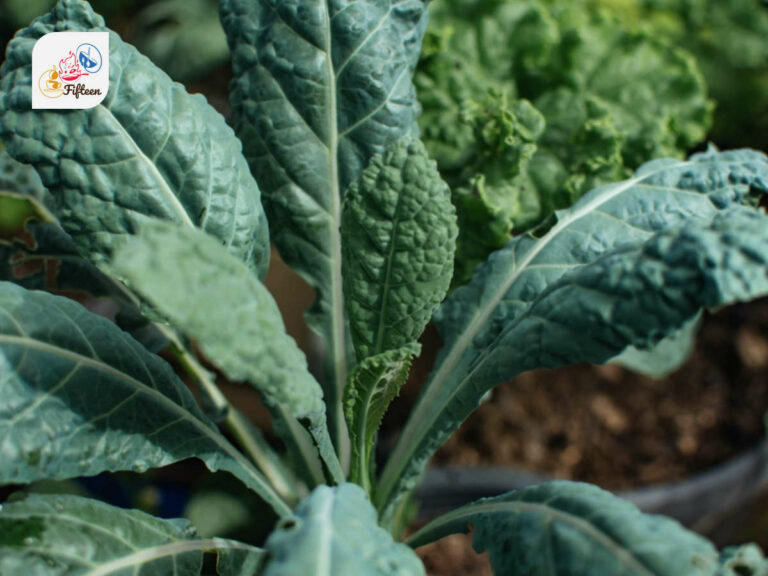
Dinosaur Kale
Dinosaur kale (also known as Lacinato kale) is a type of kale with dark blue-green leaves, offering a slightly sweeter and more delicate taste than regular kale.
This list highlights a few of the favorite picks, but even more vegetables are beginning with D to discover.
If you see the information in the list that is helpful to you, do not hesitate to give me a like or share this article. Besides broadening your knowledge, you can use the list to make a game with your friends.
Do you know more fruits starting with D? Are there any fruits beginning with D not mentioned on the list? Share with me in the comment section or continue to read more about the other alphabetical fruits from A to Z.


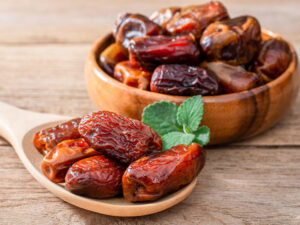
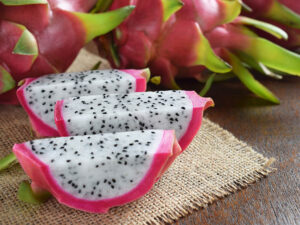
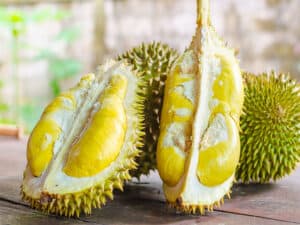
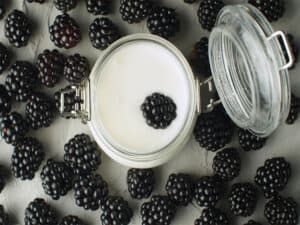
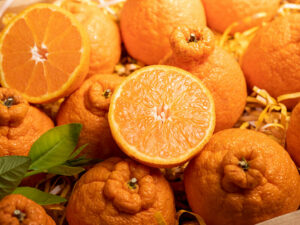
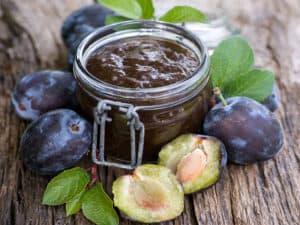
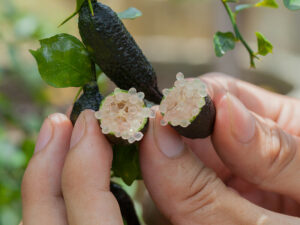
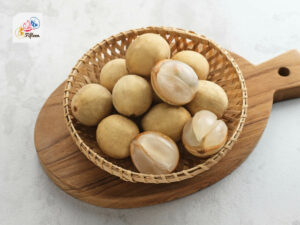
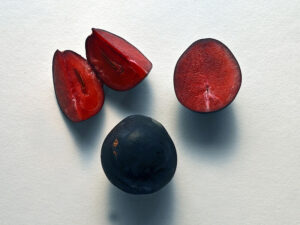
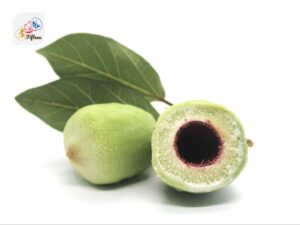
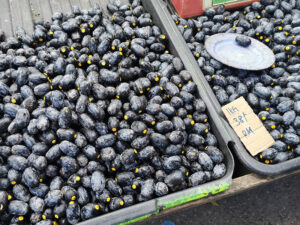
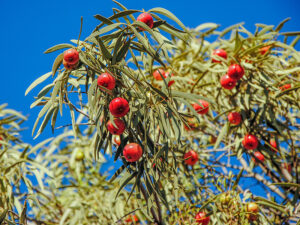
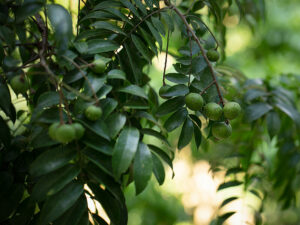
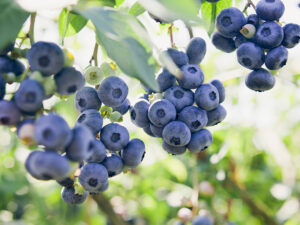
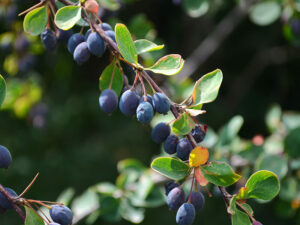
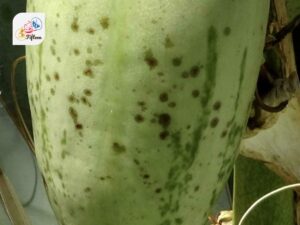
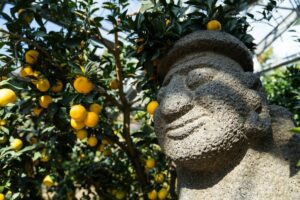
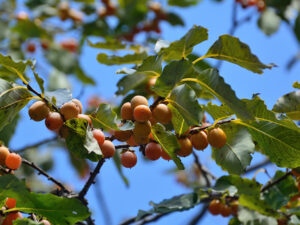
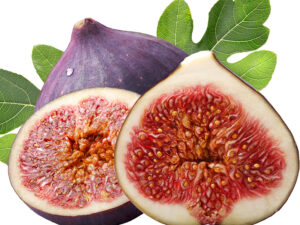
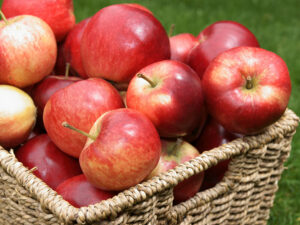
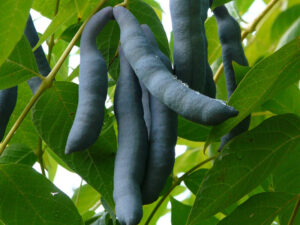
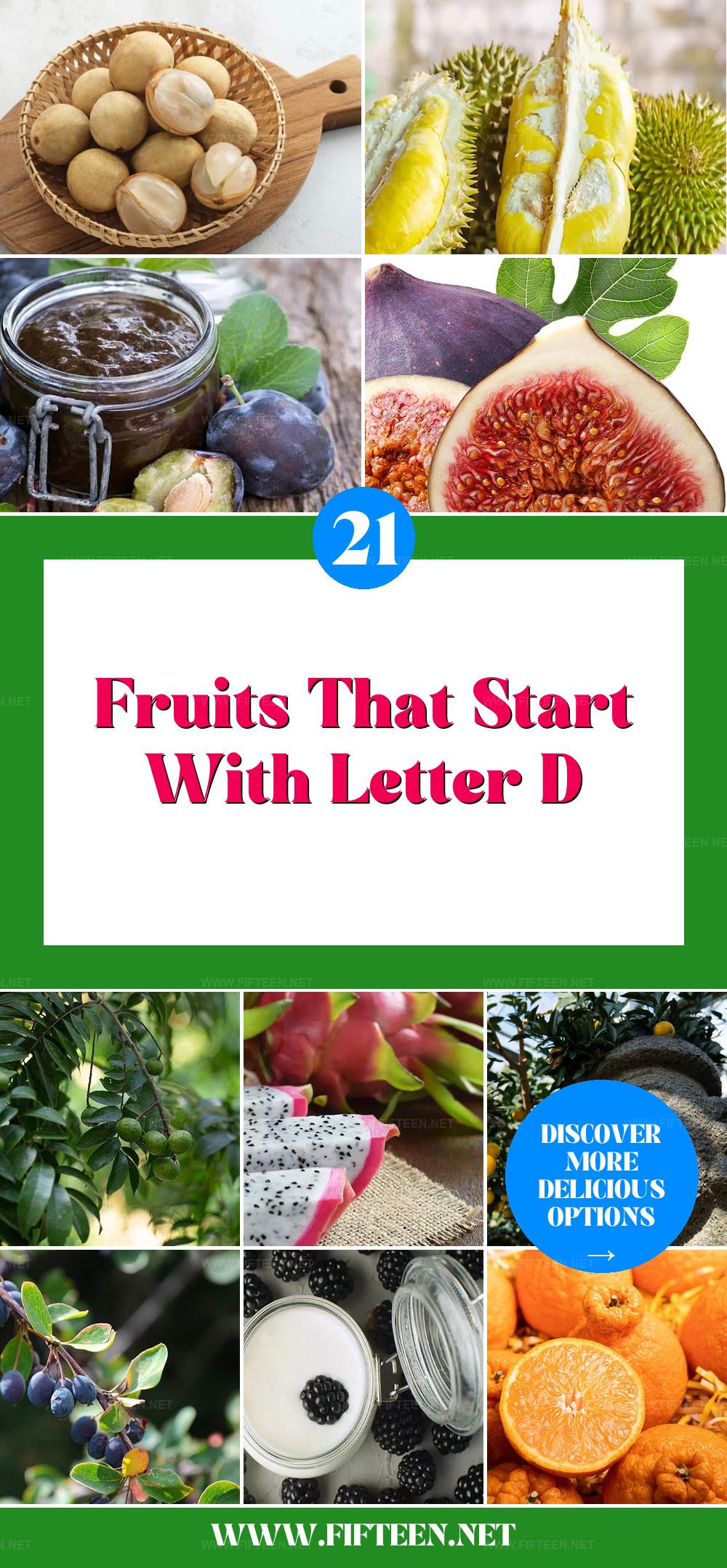
Jamie Scott
Editor in Chief, Senior Content Writer
Expertise
Home Cooking, Meal Planning, Recipe Development, Baking and Pastry, Food Editor, Cooking-video Maker, Western Food Evaluation Expert
Education
Le Cordon Bleu College of Culinary Arts
Local Community College, New York, NY
Jamie Scott is a skilled culinary expert and content creator specializing in Western cuisine. With over 15 years in the culinary field and formal training from Le Cordon Bleu, Paris, Jamie deeply understands how to blend nutrition with delicious flavors. His passion for cooking matches his commitment to making healthy eating accessible and enjoyable.
On Fifteen.net, Jamie brings a fresh perspective to classic dishes and beverages, offering readers insightful recipes, cooking tips, and a fresh view on meal planning that emphasizes taste, health, and simplicity.